Your Arch or Chuppah: How It’s Made
Dec, 13, 2017
Arches and Chuppahs for both outdoor and indoor weddings continue to grow in popularity. My staff and I built and designed these types of focal structures for about 70% of our brides and grooms in 2017. This is a wonderfully creative process and we love working with our wedding couples as we set the “stage” for their ceremony.
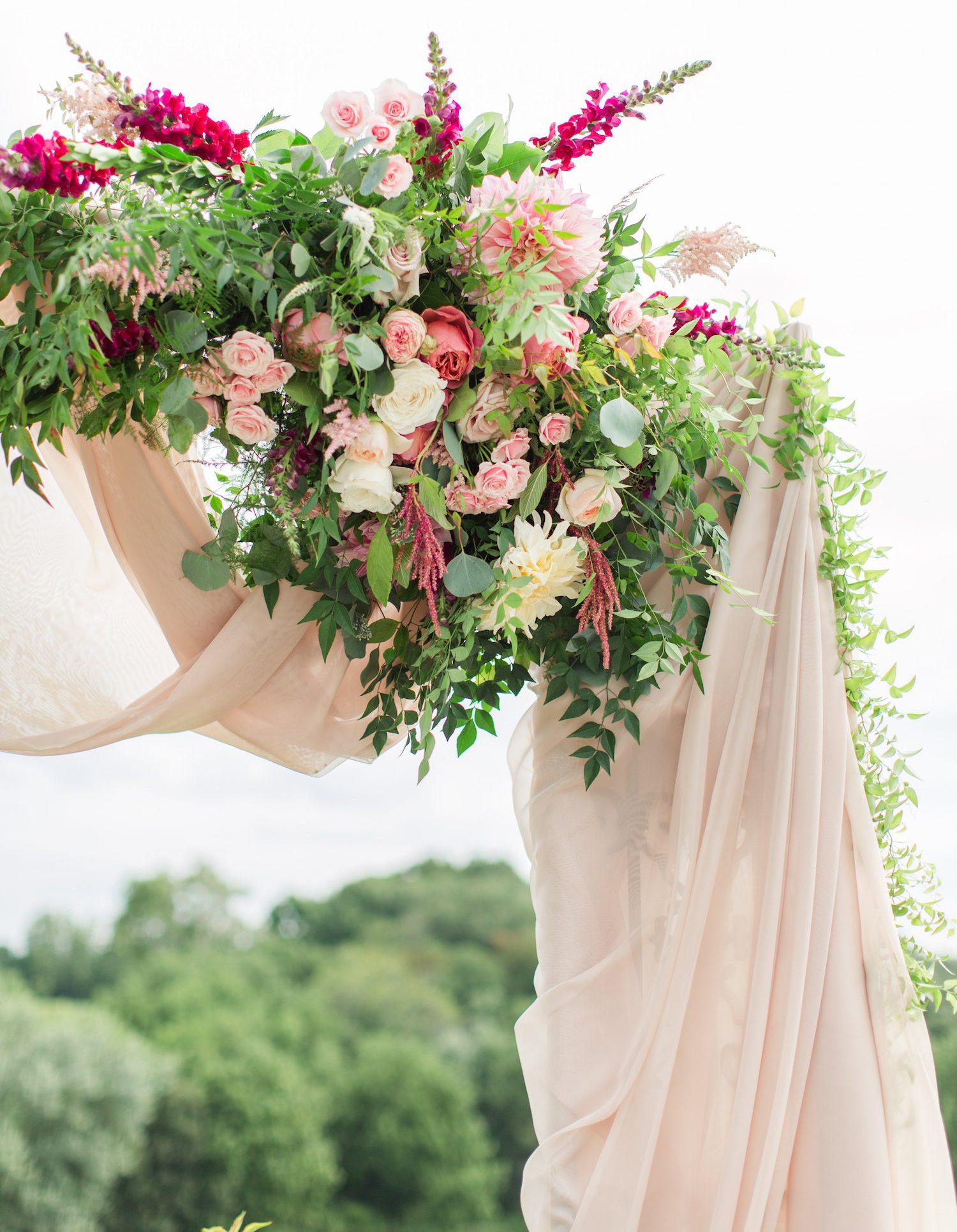
We answer a lot of questions about focal structures as we build proposals for our clients. As you might imagine, the most common questions relate to budget. After a quick review of our 2017 proposals, we find that that a well-designed arch could absorb up to 20 to 25 percent of a bride and groom’s overall budget. This apportioning of your budget may be a little hard to grasp unless you have a better idea of what is truly involved in creating these one-of-a-kind designs. Whether you want a partial display of florals, greenery or both, or a fully adorned structure, the process is the same. (Albeit, the latter may require more designers the day of your ceremony.)
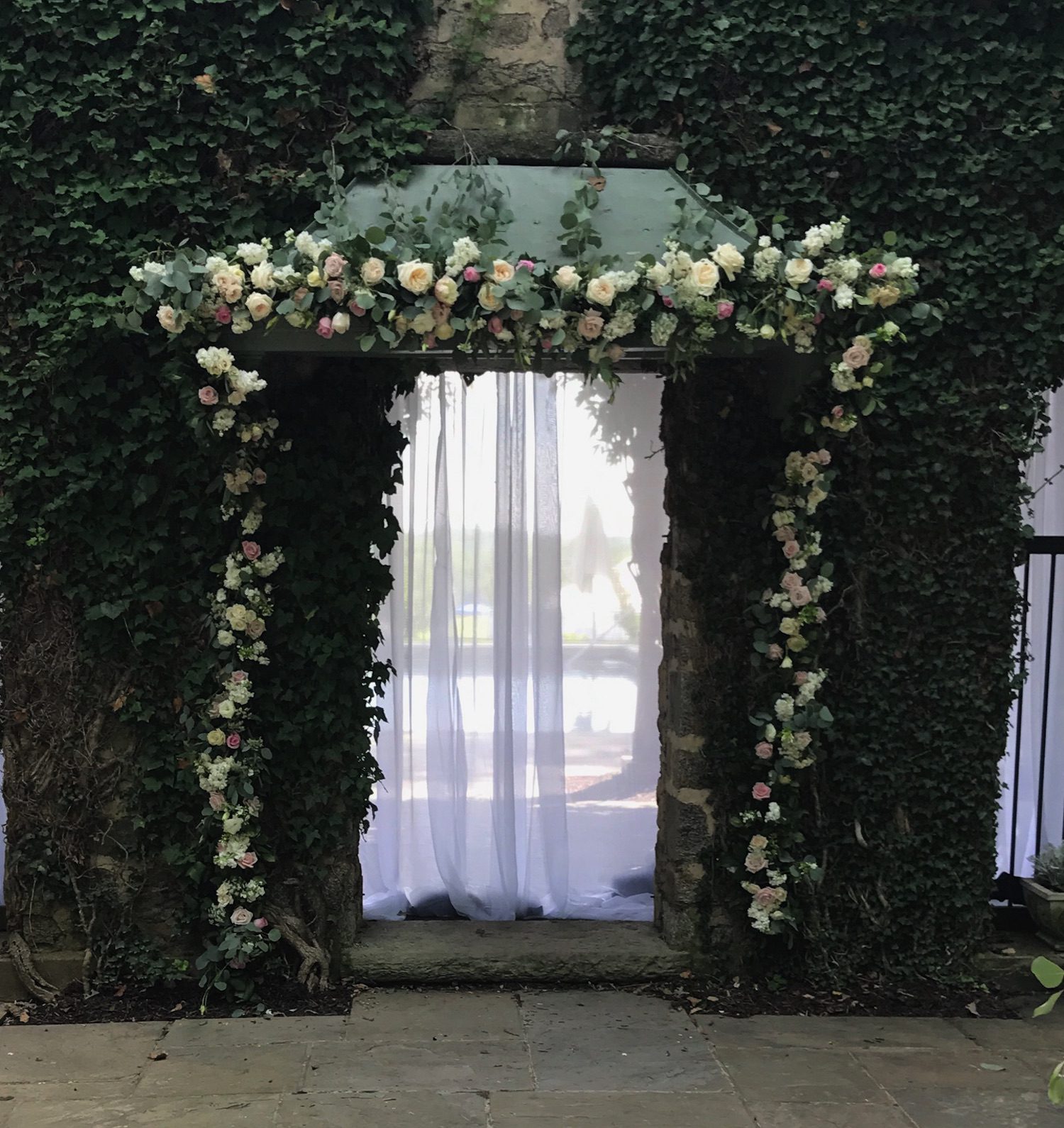
This focal structure, at the Goodstone Inn in Meddleberg, Virginia was constructed on an existing wall. We had to create an armature on-site to support our design. Photo by Jodi and Kurt Photography.
Here’s a review of how we create ceremony structures including the processes and materials involved.
Initial Design:
After agreeing on a style or design, a member of our team writes a recipe that includes a careful accounting for the quantity of flowers and greenery needed to create a specific look. It’s really important that we have enough stems to accommodate the size of the structure. Additionally, a combination of materials will be ordered including foam cages, sausages, igloos and water tubes in various shapes and sizes that will keep the flowers and greens fresh as they are exposed to the elements during your wedding.
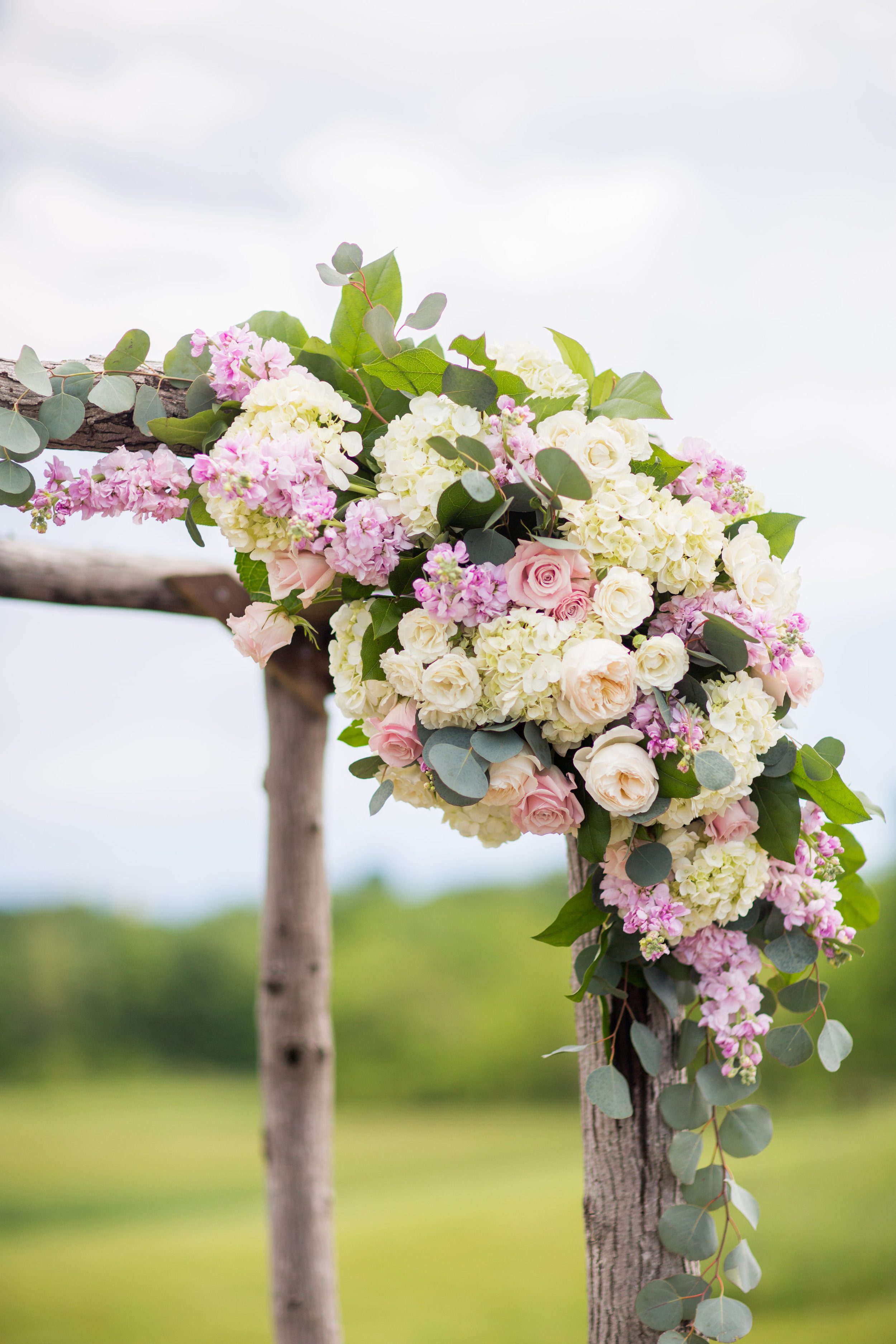
This strucure serves as a Chuppah or an arch. Photography by Kelly Pollock at KayPea.
Wedding week assembly and preparation:
Our team will prep the flowers and greens and assemble some of the elements in-studio so that we can begin to see the direction that the design will take. We will send a designer on-site to create the arch, But, it takes careful preparation in the studio to ensure that we will achieve the look we think captures you vision in the time available to us at your venue. These elements are carefully organized and packed for transport.
Building the arch:
Unless we are working with an on-site structure at your venue (potentially a way to save a little), two members of our team will begin to build the physical structure as soon as we can access the site. We will budget enough time to adjust for any environmental issues that we may face like wind, rain or even hard-packed earth. While this is happening, a stylist will deliver your bouquets and work with the reception flowers.
Designing on-site:
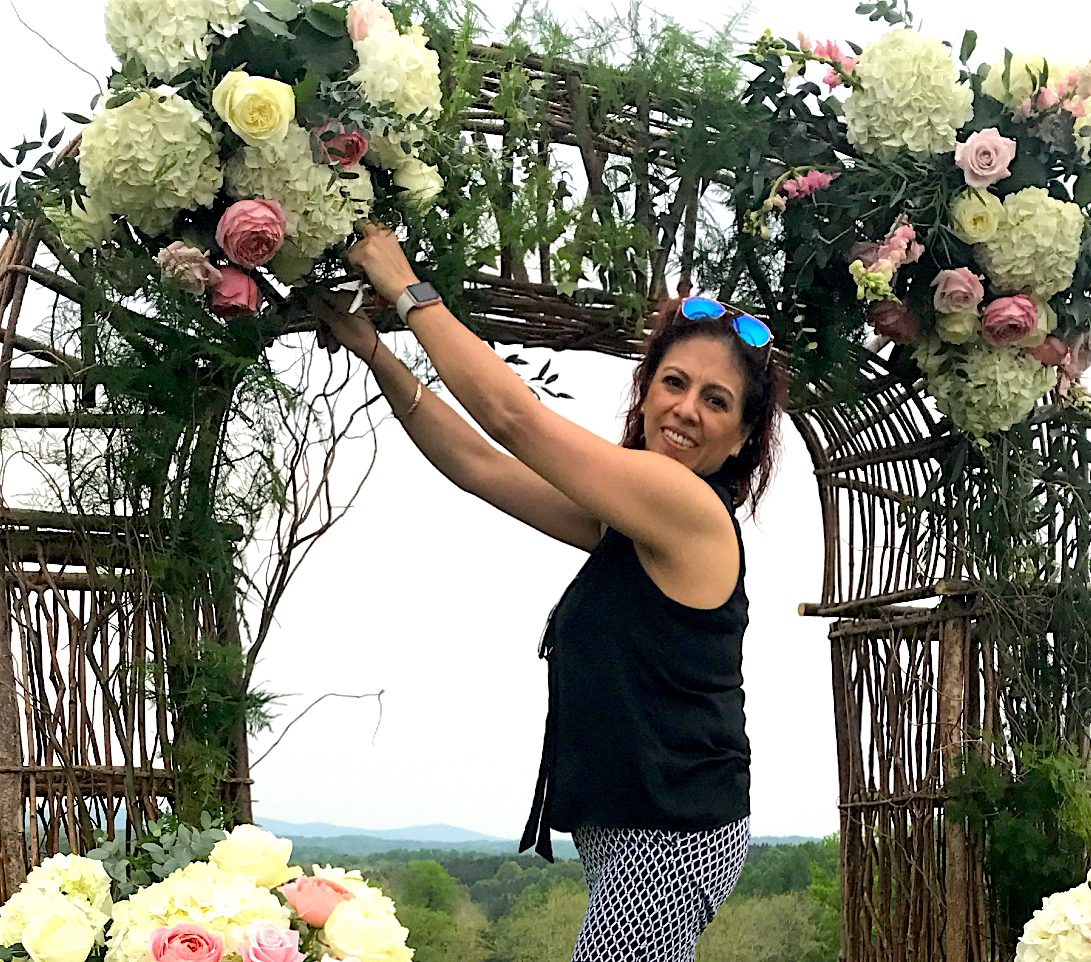
Myriam Marquez begins the design for an on-site structure.
Now that the arch is built, our designer will begin to add all the floral elements. Buckets of flowers and greens are carried to the site along with all of the necessary tools. Your designer will be up and down the ladder many times arranging the stems with the same floral techniques that we use when creating an arrangement in the studio. It’s so important that we assess progress as we go from every angle, focusing on balance in the shape and color, while creating focal points amplified by supporting greenery. All of the mechanics of our work will be carefully covered so that the arch looks natural no matter where you are standing.
Adding materials:
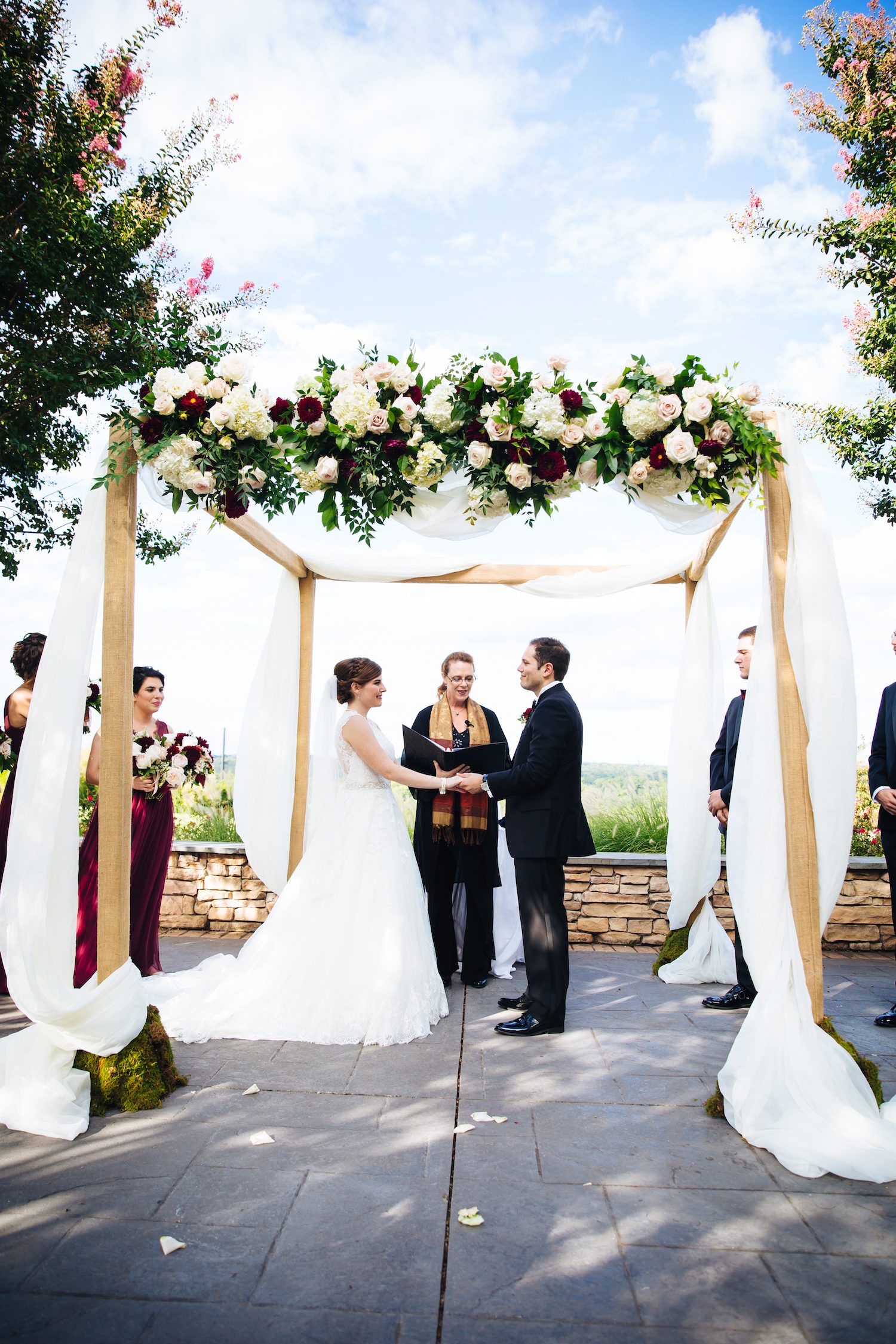
Sheer fabric serves as a canopy. Photography by Life Gallery Studios.
You may want to add fabric to your Chuppah or arch. There is a religious significance to the material on the Chuppah and many couples will ask that we attach a Tallit that is also a cherished family heirloom. This fabric across the top of the structure serves as a canopy for the Rabbi, bride and groom. Fabric can be added to any arch. Many brides like the softness or ethereal look that a fabric adds to a structure. We will have cleaned and pressed this fabric the week before your wedding. We must be swift but accurate as we place this final material as the time for your wedding ceremony should be growing near. The fabric is the final touch and must be completely secured.
Clean-up:
Clippers in hand, our designer has trimmed stems and petals as she or he works and they must conduct a thorough cleaning of your ceremony space so that no evidence of our work is seen by you or your guests. At this point, the entire delivery team has arrived to help with final touches.
Removing the structure:
At the end of the evening, we will send a team back to disassemble the arch or Chuppah (as well as all of your other décor). They will conduct a thorough cleaning of the area.
The process is intense but if you want one-of-a-kind ceremony decor, it’s really worth every dollar you spend. The arch may only be with you and your family for the duration of your event, but the pictures will hang on your wall for a lifetime.
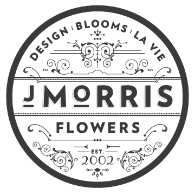

Leave a Comment